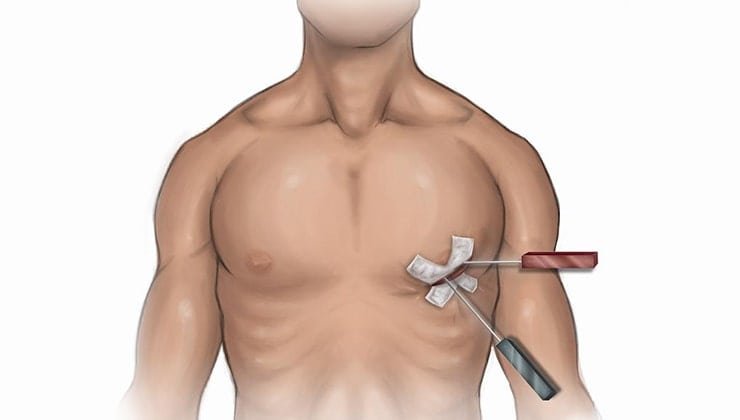Keyhole Cardiac Surgery, also known as minimally invasive surgery, is a cutting-edge approach for performing intricate heart procedures through small incisions. Instead of cutting through the breastbone, as in regular heart surgery, doctors make small cuts between the ribs using specially adapted instruments. This lets them reach the heart without disrupting too much of the surrounding tissue.
MICS aim to achieve the same surgical goals as traditional open-heart surgery but with smaller incisions, less pain, shorter hospital stays, faster recovery, and quicker return to work in properly selected patients.
The chief cardiologist at heart360 care hospital in Chennai, Dr.Nikhil
How is Keyhole Cardiac Surgery done?
Unlike regular open-heart surgery, minimally invasive surgeries might require more time because they involve special skills and techniques. There are two types of minimally invasive heart surgery: Robot-assisted Heart Surgery and Thoracoscopic Surgery.
In both types of heart surgery, the surgeon accesses the heart through tiny cuts between the ribs of the chest. They use a tool with a small camera inserted through one of these cuts to see inside the body and monitor the progress of the surgery.
During the surgery, you are connected to a heart-lung bypass machine. This machine keeps blood flowing through your body while the surgery is happening.
Advantages of Keyhole Cardiac Surgery
Using keyhole techniques in heart surgery has several benefits compared to traditional open-heart procedures, such as:
- Reduced Trauma and Scarring: Patients undergoing keyhole surgery have smaller incisions and minimal tissue disruption.
- Faster Recovery: Patients undergoing keyhole cardiac surgery have shorter hospital stays and quicker recovery in almost a few weeks than those undergoing traditional open-heart surgery that requires months to heal.
- Lower Risk of Complications: Patients undergoing keyhole cardiac surgery have lower rates of complications such as infection, bleeding, and wound healing problems. This contributes to improved patient outcomes.
- Preservation of Sternum: Patients undergoing keyhole cardiac surgery are at lower risk of bone infection and breaking. Unlike traditional surgery, because no broken bone is involved, patients can get back to their normal activities within two weeks.
Challenges associated with Keyhole Cardiac Surgery
While keyhole cardiac surgery offers numerous benefits, it carries risks similar to open-heart surgery, such as bleeding, heart attack, infection, irregular heart rhythms (arrhythmias), stroke, and even death.
A few more challenges and considerations to be considered while opting for a keyhole heart surgery include:
- Technical Complexity: Complicated heart procedures through small cuts require special training and skills in minimally invasive techniques, which might mean that not all hospitals can offer these procedures.
- Equipment and Resources: Keyhole heart surgery requires special tools, such as video-assisted cameras and robotic systems, which might not be available in every hospital or medical center.
- Patient Selection: Not everyone is suitable for keyhole heart surgery. Whether it’s the right choice depends on factors such as the patient’s health, the complexity of their heart problem, and the surgeon’s experience.
Applications in Cardiac Care
Keyhole heart surgery is used for many heart procedures, such as:
- Valve Repair or Replacement: Keyhole surgery fixes or replaces heart valves like the mitral or aortic valve without needing a big chest cut. This makes recovery quicker and less painful.
- Coronary Artery Bypass Grafting (CABG): Keyhole CABG helps bypass blocked heart arteries using less invasive methods, giving an alternative to regular bypass surgery with similar results.
- Atrial Septal Defect (ASD) Closure: Keyhole surgery closes holes in the heart wall between its upper chambers (atria) without needing open-heart surgery.
- Diagnostic Procedures: Keyhole techniques are also used to take tissue samples from the heart or perform imaging tests to analyze its functioning.
Recovery Post Keyhole Heart Surgery
Minimally invasive heart surgery usually has a faster recovery compared to open-heart surgery. The breast bone takes about 12 weeks to heal completely after regular open-heart surgery. Resuming activities too soon after open-heart surgery can prevent the bone from healing properly, resulting in infections and inflammation.
But with a keyhole surgery, there’s no broken bone, and the wounds heal in just a few days. Here, patients can get back to their normal routine within a span of two weeks.



